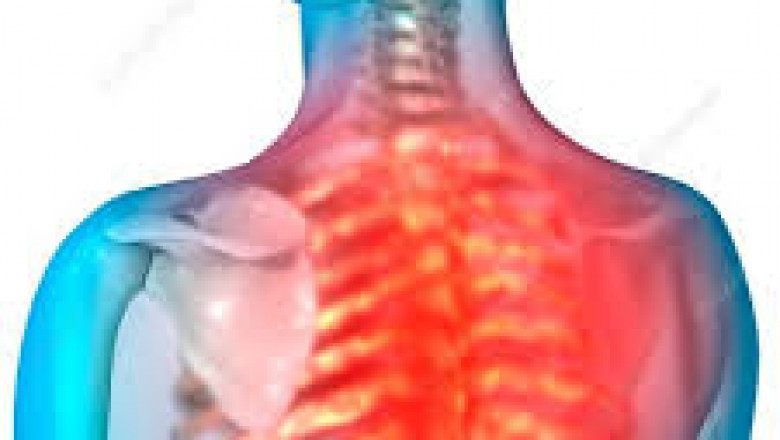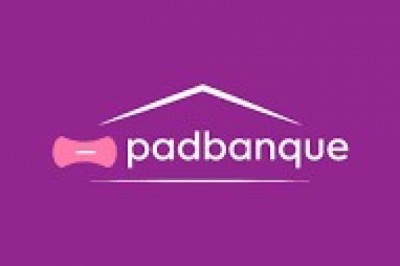views

Dorsalgia vs lumbago
Back pain is one of the most common reasons people go to the doctor or miss work, and it is a leading cause of disability worldwide. Low back pain is classified as loin pain, low back strain, or lumbago while dorsalgia is classified as backache.
Back pain can range from a muscle aching to a shooting, burning, or stabbing sensation. In addition, the pain may radiate down your leg and worsen with bending, twisting, lifting, standing, and walking.
Define Dorsalgia?
It is severe pain in the back. It takes root from two words:
- “Dorsal” means back,
- “algia” means pain.
Dorsalgia is more than just simple back pain. However, the pain involved in dorsalgia comes from the spine. The seriousness of the dorsalgia is dependent on the area of the spine it is affecting and the probable cause of the pain.
What is Lumbago?
For people who have a common musculoskeletal disorder, known as lumbago. Lumbago is a seldom-used term to mean mild to severe low back pain. The pain can be acute or chronic and affects young and old people.
If you have lumbago, you’re not alone as it affects about 80 percent of the Western world population.
Poor posture, sudden movement, coughing, and sneezing are the main causes of lumbago. The most obvious feature of lumbago is sudden, severe pain in the lower back. The following are treatment options
- anti-inflammatories for temporary pain relief.
- hot or cold compresses.
- exercise and gentle stretches.
- yoga.
How many types of Dorsalgia?
However, there are six known types of dorsalgia.
1)Cervical dorsalgia
Sometimes, cervical dorsalgia is also medically termed as cervicalgia. In this type, the cervical spine is involved. The pain you feel is in the neck region and occurs due to some injury and otherwise as a result of degeneration of the cervical spine.
2)Cervicothoracic dorsalgia
This type of dorsalgia involves cervical and thoracic regions of the spine. The cervical spine is the uppermost part of the vertebral column that exists in the neck region. Whereas the thoracic spine is the second portion of the vertebral column. It is located between the cervical spine and lumbar spine. Hence, the pain in cervicothoracic dorsalgia comes from both of these portions.
3)Thoracic dorsalgia
As compared to cervicothoracic dorsalgia, this type of back pain comes from only the thoracic vertebral segments. Typically, this type of dorsalgia is a rare occurrence.
4)Thoracolumbar dorsalgia
Thoracolumbar dorsalgia involves both the thoracic and lumbar spine. Usually, this type involves both upper and lower back pain.
5)Lumbar dorsalgia
The lumbar spine is located where the thoracic spine ends and continues down to where the sacral spine starts. As this part of the back is the most used of all in our daily movements, lumbar dorsalgia is more common among patients with this disease.
6)Lumbosacral dorsalgia
This type involves back pain that roots from both the lumbar and sacral spine.
Types of Lumbago
However, there are many ways to categorize low back pain but three common types include:
- Mechanical pain. By far the most common cause of lower back pain, mechanical pain is pain primarily from the muscles, ligaments, joints, or bones in and around the spine. This type of pain tends to be localized to the lower back, buttocks, and sometimes the top of the legs. It is usually influenced by loading the spine and may feel different based on
- Motion,
- activity,
- standing,
- sitting,
- or resting.
Radicular pain.
This type of pain can occur if a spinal nerve root becomes inflamed. Radicular pain may follow a nerve root pattern or dermatome down into the buttock and leg. Its specific sensation is sharp, electric, burning-type pain and can be associated with numbness or weakness. It is typically felt on only one side of the body. Nerve root pain often called sciatica
Nerve root pain means that a nerve coming out from the spinal cord is irritated or pressed on. You feel pain along the course of the nerve. The irritation or pressure on the nerve may also cause pins and needles, numbness, or weakness in part of a buttock, leg, or foot.
List some of the causes of Dorsalgia
Bulging or herniated discs can cause dorsalgia. Other most common causes are,
- muscle strain
- ligament strain
- bulging discs
- ruptured discs
- arthritis
- skeletal irregularities
The following are the less common causes of Dorsalgia:
- osteoporosis
What are the causes of lumbago?
Sometimes, the cause of lumbago is hard to find, even after comprehensive medical tests have been done. Lumbago can be caused by several factors, but the main reason is the overuse of the lower back and the sudden lifting of a heavy load.
There are many things that cause low back pain or lumbago. Listed below are some of the more common conditions, or diagnostic terms;
- Osteoarthritis or Spondylosis
- Osteoporosis
- Scoliosis
What are the Risk factors of dorsalgia and lumbago?
However, some risk factors are given below
- older age
- lack of exercise
- excess weight
- arthritis
- depression
- anxiety
- excessive smoking
How can we diagnose dorsalgia?
Physical Examination
Your healthcare provider will likely begin with a physical examination. They may ask you to sit, stand, walk, and pick your legs up off the floor.
Neurological Testing
Neurological testing such as an EMG may be necessary, especially if a nerve-related cause is diagnosed. Tests that may signal the need for neurological testing include:
- Straight Leg Test: For this common test, your doctor will have you lay on your back on an exam table You’ll relax your outstretched, affected leg. Your doctor will then gently lift your leg 30-60 degrees. If this causes pain in the back or pain that radiates in the leg, your condition may have a nerve-related origin.
- Adam’s Forward Bend Test: During this test, you’ll stand with both feet on the floor then bend forward at the waist. Your healthcare provider will watch for abnormalities or signs of larger conditions.
Imaging
In more complex cases of dorsalgia, imaging may be necessary. MRIs can be useful in diagnosing dorsalgia. You may also want to ask your doctor about the potential of X-rays or a CT scan helping you find a diagnosis and successful treatment plan.
How can we diagnose lumbago?
Lumbago can include any discomfort in your back muscles, nerves, or bones. Doctors use a variety of tests to determine what type of back pain you have:
- Physical tests, including examination of your nerve function and range of motion
- Chemical tests of your blood and urine
- X-rays to examine the structure of your bones and the health of your tissue
- Computed tomography (CT) or magnetic resonance imaging (MRI) scans may be done to confirm your symptoms and locate the cause of the pain
Write some treatments of dorsalgia?
Your healthcare provider will likely recommend starting out with conservative treatments like physical therapy, at-home remedies, and medication. If those treatments fail to relieve your pain, then slightly more invasive treatments like dry needling or injections could help you. If your pain still persists, then surgery may be necessary.
Physical Therapy
Physical therapy is a first-line treatment for responding to backache associated with dorsalgia. If your primary healthcare provider determines that you do not have a serious condition, then a physical therapist will likely be able to provide a treatment plan that relieves your pain and helps you perform normal activities. In some cases of chronic back pain, physical therapy can be more effective than surgery.
NSAIDs
Non-steroidal anti-inflammatory drugs are commonly recommended for backache and acute back pain. They are available over-the-counter and can be taken as pills, capsules, topical creams, and gels. Popular NSAIDs include aspirin, ibuprofen, naproxen, and indomethacin. Diclofenac, a prescription NSAID often applied in topical form, effectively relieves joint pain.
Muscle Relaxants
If your pain is persistent and doesn’t respond to first-line, over-the-counter treatments, you may want to talk to your doctor about muscle relaxants. Cyclobenzaprine is a muscle relaxant that effectively treats neck pain and related muscle spasms. Muscle relaxants have also been shown to provide relief for non-specific back pain, especially acute pain.
Dry Needling
Dry needling can be used to treat pain in the thoracic spine. Often used in sports medicine, physical therapists perform dry needling to relieve muscle pain. By inserting a small needle into a muscle’s trigger point, the therapist relaxes the muscles and increases blood flow in the painful area.
Surgery
If you have unrelenting pain associated with radiating leg pain or progressive muscle weakness caused by nerve compression, you might benefit from surgery. These procedures are usually reserved for pain related to structural problems, such as narrowing of the spine or a herniated disk, that hasn't responded to other therapy.
How can we cure lumbago?
Treatment for Lumbago varies depending on many different factors, including patient age, weight, activity level, and much more. The following are treatment options:
- anti-inflammatories for temporary pain relief
- hot or cold compresses
- exercise and gentle stretches
- yoga
- acupuncture
- chiropractic & spinal manipulation
- physical therapy
- surgery
Rest during the acute phase
When the pain is acute, there’s not much you can do other than rest and give your body a break. With acute cases of lumbago, relieving pressure on the lower back muscles can help alleviate symptoms. There’s a really easy way to do this: lie down on the floor on your back and place your legs on a chair or stool. The heat from a hot water bottle or heat patch can also help with lumbago.
Strengthening
Muscles that are too weak and inactive tend to become overly tense. By doing targeted strength exercises you will reach the very muscles that can help you restore balance to tensioning structures.
When Surgery is Necessary
The non-surgical treatment does not provide relief and symptoms become worse surgery is necessary. Candidates for surgery present any of the following:
- Reasonably good health
- Back and leg pain limits normal activity or impairs quality of life
- Progressive neurologic deficits develop, such as leg weakness, numbness or both
- Difficulty standing or walking
- Medication and physical therapy are ineffective
If several nerve roots and discs are causing the pain or if degeneration and instability exist in the spinal column, the neurosurgeon may choose:
- a minimally invasive approach;
- a more open decompression;
- or fusing the vertebrae together with bone grafts and stabilizing them with instrumentation, including metal plates, screws, rods, and cages, depending on the extent of the disease.
After such surgery, patients may gain restored mobility in the back, including the ability to bend over. In addition, patients may require postoperative physical therapy.
How do they differ?
Common Age Group
However, Dorsalgia most commonly occurs in the following age group:
- Aged between 20-50 years
- Lumbago can occur at any age.
Common Gender
However, They can occur in any gender.
Complications
If you don't treat on time lumbago causes complications.
- permanent neurological damage
It is not known if Dorsalgia causes complications if left untreated.












